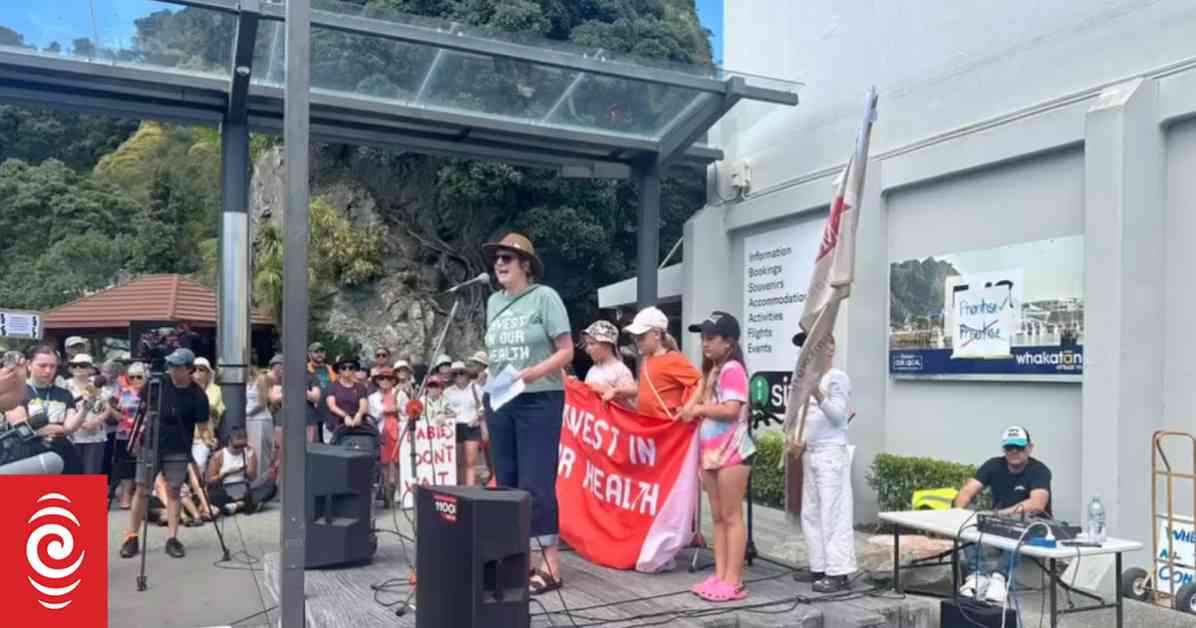In the heart of Whakatāne, a vibrant community came together to voice their concerns over the closure of obstetrics and gynaecology services at their local hospital. The hīkoi, a traditional Māori protest march, was not just about the shutdown of crucial healthcare facilities but also shed light on the deeper issues of chronic understaffing, mismanagement, and dysfunctional decision-making processes plaguing the region.
The protest, organized by dedicated locals like Nándor Tánczos, a Whakatāne district councillor, drew an impressive turnout of 700 to 1000 passionate individuals, representing a broad spectrum of the community. Families, elders, medical professionals, and indigenous groups all united under the common goal of demanding action to address the pressing healthcare crisis.
The catalyst for this demonstration was the recent closure of obstetrics and gynaecology services due to a severe lack of staff. This decision has left many residents anxious about the potential risks to pregnant women and infants, given that the nearest hospital in Tauranga is over an hour away. While Whakatāne boasts a skilled network of midwives, the gap left by the closure of these vital services has left the community feeling vulnerable and underserved.
The sea of orange-clad protesters not only symbolized solidarity but also marked a personal connection to the issues at hand. Many wore orange to signify their own experiences of being impacted by the shortcomings in the healthcare system, ranging from chronic understaffing to poor management practices driven by centralized decision-making far removed from the local realities.
Tánczos highlighted the global shortage of obstetricians, emphasizing the challenges in recruiting professionals to rural areas like Whakatāne. Despite the town’s charm and quality of life, bureaucratic red tape often hampers the recruitment process, leading to frustrating delays and missed opportunities for much-needed medical expertise to reach the community.
The hīkoi resonated beyond Whakatāne, drawing attention to the broader systemic issues within the healthcare sector. Speakers at the rally, including local MPs and health experts, voiced their concerns about the deep-seated dysfunction within the health service, exacerbated by recent high-profile resignations that underscored the need for urgent reforms and sustainable solutions.
In response to the impassioned plea of the protesters, Health NZ’s deputy chief executive for the Midland region, Cath Cronin, acknowledged the significance of the services under threat and reassured the community of ongoing efforts to reinstate full maternity services. Practical measures, such as 24/7 midwife support, financial assistance for those needing to travel for childbirth, and enhanced emergency transfer services, are being implemented to bridge the gap until a more permanent solution is in place.
Moving forward, Health NZ is committed to appointing local leadership at Whakatāne Hospital, recruiting new senior doctors, and fostering strong partnerships with community stakeholders to ensure sustainable and accessible healthcare services for the region. The community can rest assured that their voices have been heard, and tangible steps are being taken to address their concerns and prioritize their well-being.
As the sun sets on the protest march in Whakatāne, the spirit of unity and resilience shines bright in the faces of the demonstrators, a reminder of the power of community action in advocating for essential services and holding decision-makers accountable. The road ahead may be challenging, but with continued support and collaboration, the path to a healthier, more equitable healthcare system for all is within reach.

















